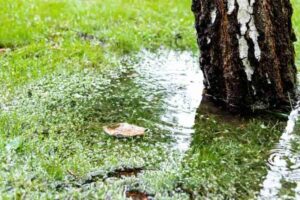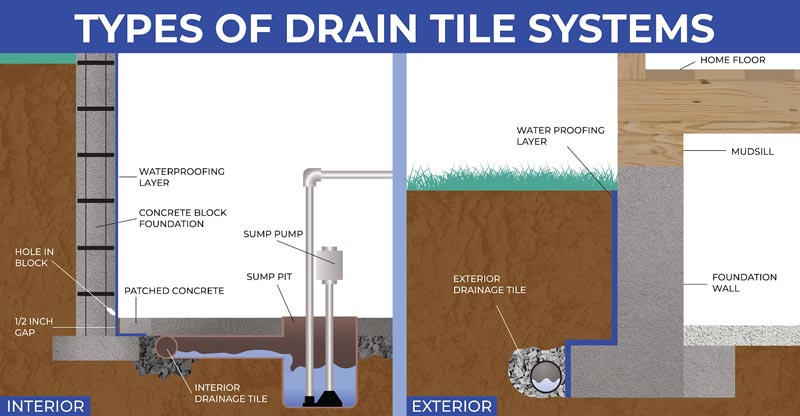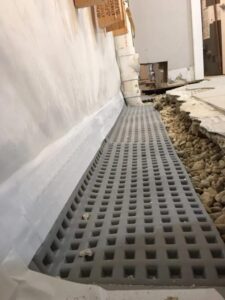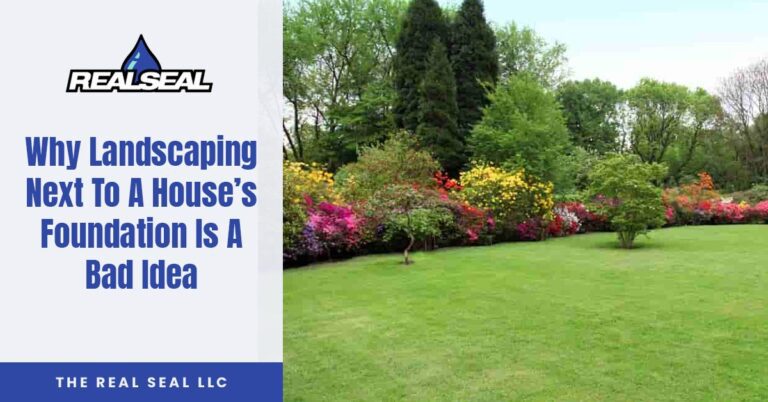
Landscaping next to a house’s foundation can significantly enhance the building’s appearance. However, if it isn’t done correctly, it could negatively impact the building’s structural integrity and lead to expensive foundation repairs down the road.
This post concentrates on landscape design best practices for those looking to make sure their house’s foundation stays strong for years to come. Read along as we discuss tips, tricks, and ideas that every homeowner should know about when it comes to landscaping next to a house’s foundation.
Did You Know That Excess Soil Moisture Causes Most Foundation Problems?

Believe it or not, most foundation problems are caused by too much water in the soil around the foundation. This excess soil moisture can wreak havoc on your home’s foundation. It’s not just a minor inconvenience either, as foundation problems caused by excess moisture can lead to severe damage. If your foundation begins to shift or settle, it can cause cracks in your walls, ceilings, and floors leading to expensive repairs. So, it’s crucial to do what you can to prevent excess moisture from building up in the soil around the foundation. We’ll talk more about how to do that in just a bit.
Your Landscaping May Look Beautiful, But That Doesn’t Mean It’s Good For Your Foundation
Have you ever passed by a beautifully landscaped yard only to find out later that the homeowner had to deal with foundation issues? It’s a common problem. While landscaping can enhance your home’s look, it’s important to understand how it can affect your foundation. For example, trees and shrubs with invasive roots can wreak havoc on your foundation’s structural integrity. Additionally, heavy hardscaping features like large stones and concrete can cause soil displacement and lead to foundation problems. So, while landscaping can undoubtedly improve curb appeal, it’s essential to be mindful of its potential impact on your home’s foundation.
Tips For Landscaping Next To A House’s Foundation
If you want to add some curb appeal to your home, landscaping can be a great way to achieve it. However, landscaping next to your house’s foundation can be challenging. If you’re not careful, plants and trees can damage your foundation, attract pests, or cause drainage problems. So, here are some tips to help you create a beautiful and functional landscape next to your home’s foundation:

- It’s best to keep all vegetation (flowers, shrubs, etc.) several feet away from the foundation. They might look beautiful planted right next to your house, but they need water, and you should be trying to avoid adding excess moisture to the ground around the foundation.
- Don’t cover up your home’s foundation. Leave several inches exposed to ensure water buildup cannot come over-the-top of the foundation and leak into the basement.
- Use mulch. This will help prevent the soil around the foundation from becoming too dry, which can also cause foundation trouble.
- Don’t landscape one side of the house and forget the rest. This could cause you to water only one side of the foundation. If the soil under the foundation contains a lot of clay, it will expand when wet and shrink when it dries out. Therefore, if you water only one side of the foundation, you could face problems as the soil on that side continually expands and shrinks.
These tips will help you create a stunning and sustainable landscape that complements your home’s architecture and protects your foundation.
Easy Ways To Help Prevent Foundation Trouble When Landscaping

Since most foundation problems are caused by excess moisture in the ground around the foundation, you can help prevent trouble by simply getting groundwater around the foundation under control. Here are some ways to do that:
- Clean your gutters regularly to ensure they’re not packed with dead leaves and other debris. You don’t want overflowing gutter water running down the side of your house and soaking into the ground around your foundation. Did you know that the average American roof produces 1,000 gallons per inch of rain that falls?
- Install downspout extensions to carry water at least 15 feet away from your foundation before being released.
- Regrade the yard around your home so it slopes away from the foundation. This will prevent groundwater from draining toward the foundation. A landscaper can help you with this, or you could DIY.
- Install a drain tile system. There is no better foundation waterproofing system available. There are two types of drain tile systems, exterior and interior. The exterior system is installed around the outside perimeter of the foundation at the footing level. The interior system is installed along the inside perimeter of the basement or crawl space. For more information on how they work, see A Beginner’s Guide To Interior & Exterior Drain Tile Systems.
Landscaping next to your home’s foundation needs to be done correctly. Too much water in the ground around a foundation can lead to problems and costly repairs. If you have questions or are unsure about which type of landscaping best suits your situation, consulting with a professional landscaper is recommended.
If you think your Chicagoland home might have a foundation issue, contact The Real Seal Basement Waterproofing and Foundation Repair today to schedule a foundation evaluation. If we find a problem, we’ll give you a repair estimate.







22 Responses
That seemed like good advice.
I’ve put a 4% slope on the first 4 feet away from the house.
The 3ft wide stripe that is closest to the house will now receive a thin layer of limestone screenings (for stability), then a layer of heavy black polyethylene and then a layer of river rock.
The remaining 1 foot strip, at the bottom of the slope, will be earth, covered by landscape fabric, covered by river rock.
There will be a line of edging that separates all of this from the grass.
My thought is that rainfall will drain down the plastic, away from the house, which seems good.
But it might pool against the edging. So the strip of river rock over landscape fabric over earth will allow it to drain downwards, but at least immediately not right on top of the foundation. It adds a wide band of soil to absorb the water, which might reduce the immediate storm load on the foundation drain and sump pump.
I’m using river rock instead of mulch to reduce the risk (I hope) of inviting termites, earwigs, ants.
Does this make sense to you?
Hi Doug!
You did a good job with the grading of the yard around the home. The layer of polyethylene and river rock will certainly help the water flowing away from the home. You should make sure the area does allow the water to flow further than the plastic so that the water continues away from the foundation. River rock or mulch will work just fine. Don’t worry about the termites, earwigs, and ants outside. Once you see them inside is when to be concerned.
Great post! I never realized how detrimental landscaping near the foundation could be. It’s a common oversight that could lead to major issues down the line. Thanks for highlighting the importance of proper drainage and maintenance!
Anytime!!
Great article! I never considered how landscaping could impact a home’s foundation. It’s eye-opening to realize that the type and placement of plants and mulch can lead to potential water damage. I’ll definitely rethink my garden plans now!
Always good to think the gardening around the house through so it doesn’t impact the foundation!
Hi Austin,
I read what you said about foundation issues.
I currently bought a home. Told I am borderline for Flooding.
I have 2 old tree stumps removed ( already have Cole Miller to remove in the spring) and getting 4 trees removed from (Micah Heverling doing this in the spring). Should I have something done to prevent flooding in the future. Also want to get a garage/carport/shed installed. Let me know your thoughts. Thank-you! Susan Cintron [email protected]
Hi Susan!
For any waterproofing concerns, you should address where you are looking to keep dry. It may be best to bring in someone to evaluate this for you, so you can get specifics on your unique situation.
All good points. Cleaning the gutters is irritating, but far less stressful than the problems it can cause if you don’t. We’ve saved so much money by getting the tools that we needed at our home center to keep up with it.
You’re absolution right! Keeping ahead of preventative maintenance is the best practice.
This article really highlights some crucial points about the risks of landscaping near a foundation. I never considered how moisture and roots could impact the integrity of my home. Thanks for the valuable insights!
Happy to help!
Great insights! I’ve always wondered about the impact of landscaping so close to the foundation. It’s interesting to learn how it can lead to moisture issues and potential damage. Definitely makes me rethink my garden plans!
Happy we could help!
Do you have any contact in Portland, Oregon? I did some landscaping to shed water away from the house last summer and now am experiencing foundation issues inside the house. Lots of creaks and shifts being heard. Would like a professional opinion on resolving this issue. Thanks!
Hi Erik!
Unfortunately we do not have a contact in Portland. You can look at various review sites and neighborhood Facebook groups, and that can help get you to a qualified contractor.
This article really opened my eyes to the potential issues of landscaping too close to the foundation. I always thought it looked nice, but now I realize how it can lead to moisture problems and pest issues. Thanks for the valuable insights!
You’re very welcome!
This post really opened my eyes! I never considered how landscaping close to the foundation could lead to moisture problems and potential damage. Thank you for highlighting the importance of maintaining proper drainage and keeping plants at a safe distance. I’ll definitely rethink my garden layout!
Have fun with the garden layout!
Great insights! I never realized how much landscaping right next to a foundation could lead to drainage issues. It’s definitely something to consider when planning my garden. Thanks for sharing these tips!
Always happy to help!